The Impact of Stress on Your Musculoskeletal System
August 14, 2025
8 min

Understanding the Complex Impact of Stress on Musculoskeletal Wellbeing
Stress is an unavoidable part of life, but its effects reach far beyond the mind, deeply influencing the musculoskeletal system—the network of muscles, bones, and joints that supports our body and movement. This article explores how stress physiologically affects muscles and joints, the symptoms to watch for, the biological mechanisms behind these changes, the role of occupational stress, and effective strategies to manage stress-induced musculoskeletal problems. By understanding this intricate relationship, readers can better protect their musculoskeletal health and improve overall wellness.
The Physiological Impact of Stress on the Musculoskeletal System

How does stress impact the musculoskeletal system?
Stress has profound effects on the musculoskeletal system, primarily through the body's fight-or-flight response. When stress triggers this response, it leads to the release of hormones such as adrenaline and cortisol. These hormones cause muscles to tense up in a protective reflex, making muscles more sensitive to pain and discomfort.
Prolonged exposure to stress keeps muscles in a near-constant state of tension, which can result in spasms, stiffness, and soreness. Commonly affected areas include the neck, shoulders, back, jaw, and even facial muscles. This ongoing muscle tension not only causes localized pain but can also contribute to tension headaches, migraines, and temporomandibular joint (TMJ) issues.
Additionally, stress hormones influence inflammation levels within the body. Elevated cortisol and cytokine levels can promote inflammation in joints and soft tissues, worsening symptoms of conditions such as arthritis and fibromyalgia.
Repetitive movements and poor posture often accompanying stress further strain the musculoskeletal system. For instance, high stress can lead to poor ergonomic habits, resulting in strain in the upper back, chest tightness, and altered spinal alignment.
Managing stress effectively is essential to preserving musculoskeletal health. Techniques such as regular physical activity, relaxation practices, maintaining good posture, proper nutrition, and seeking professional interventions can help reduce muscle tension and inflammation. By controlling stress, individuals can decrease the risk of developing chronic pain and avoid aggravating existing musculoskeletal issues.
Recognizing Symptoms and Physical Manifestations of Musculoskeletal Stress

What are the symptoms of musculoskeletal stress?
Musculoskeletal stress often manifests through a variety of physical symptoms that reflect ongoing muscle tension and discomfort. A common sign is chronic muscle tension and stiffness, which can persist over long periods and lead to heightened sensitivity and pain.
Individuals experiencing stress-related musculoskeletal issues may develop tension-type headaches and migraines, especially in the neck, shoulders, and head regions. These headaches are often caused or worsened by prolonged muscle guarding or guarding reactions triggered by stress.
Pain is frequently felt in the lower back and upper extremities, including the shoulders, elbows, wrists, and jaw. This pain may be accompanied by feelings of soreness, tightness, and spasms, which arise from increased muscle activity and reduced blood flow.
In addition to localized pain, people often notice a decrease in flexibility and range of motion in affected areas. Muscle fatigue is also common, alongside physical signs like restlessness, fidgeting, and tense movements.
Overall, these symptoms are indicative of the body's response to chronic stress, where muscles remain in a heightened state of guardedness, leading to discomfort and functional impairments. Recognizing these signs early can help in managing stress and preventing further musculoskeletal disorders.
More info search query: symptoms of stress related musculoskeletal pain and tension
Biological Mechanisms and Models Explaining Stress Effects on Musculoskeletal Health

What biological responses and models explain the impact of stress on musculoskeletal health?
When the body experiences stress, it activates complex biological systems designed to respond quickly to perceived threats. Central to this process are two key axes: the sympathetic-adreno-medullary (SAM) axis and the hypothalamic-pituitary-adrenal (HPA) axis.
The SAM axis triggers the release of adrenaline and noradrenaline, hormones that prepare the body for a 'fight or flight' response. This results in increased heart rate, blood pressure, and muscle tension. Simultaneously, the HPA axis releases cortisol, a stress hormone that helps maintain alertness and energy levels. However, prolonged activation of these axes keeps muscles in a state of guardedness, which can lead to ongoing tension, stiffness, and pain, especially in the neck, shoulders, and back.
Chronic stress leads to sustained hormonal release, which can impair immune functions and promote inflammation. Elevated cortisol levels contribute to muscle protein breakdown, reducing strength and inducing biochemical damage to tissues. This persistent state not only worsens musculoskeletal discomfort but can also slow tissue repair processes, compounding health issues.
To understand how stress influences musculoskeletal health, several models have been developed. The biopsychosocial model emphasizes the interaction between psychological factors, biological responses, and social contexts. It explains individual variability in stress responses and illness outcomes, considering mental health, social support, and occupational factors.
Ecological models expand this view to include work organization, environmental stressors, and biological pathways, illustrating the interconnected systems that influence health risks. These models collectively shed light on how stress triggers neuroendocrine and immune responses, which in turn impact muscle and connective tissue health.
Furthermore, measuring physiological parameters such as muscle tension, cortisol, and catecholamines helps researchers understand stress’s effects on musculoskeletal tissues. These indicators provide insights into how sustained stress activity correlates with pain, inflammation, and tissue degeneration.
In summary, the biological responses—principally activation of the SAM and HPA axes—and comprehensive models offer a detailed understanding of how stress can lead to musculoskeletal disorders. Recognizing these mechanisms is essential for developing effective prevention and treatment strategies, integrating behavioral, biological, and environmental approaches.
Occupational Stress and Its Role in Musculoskeletal Disorders
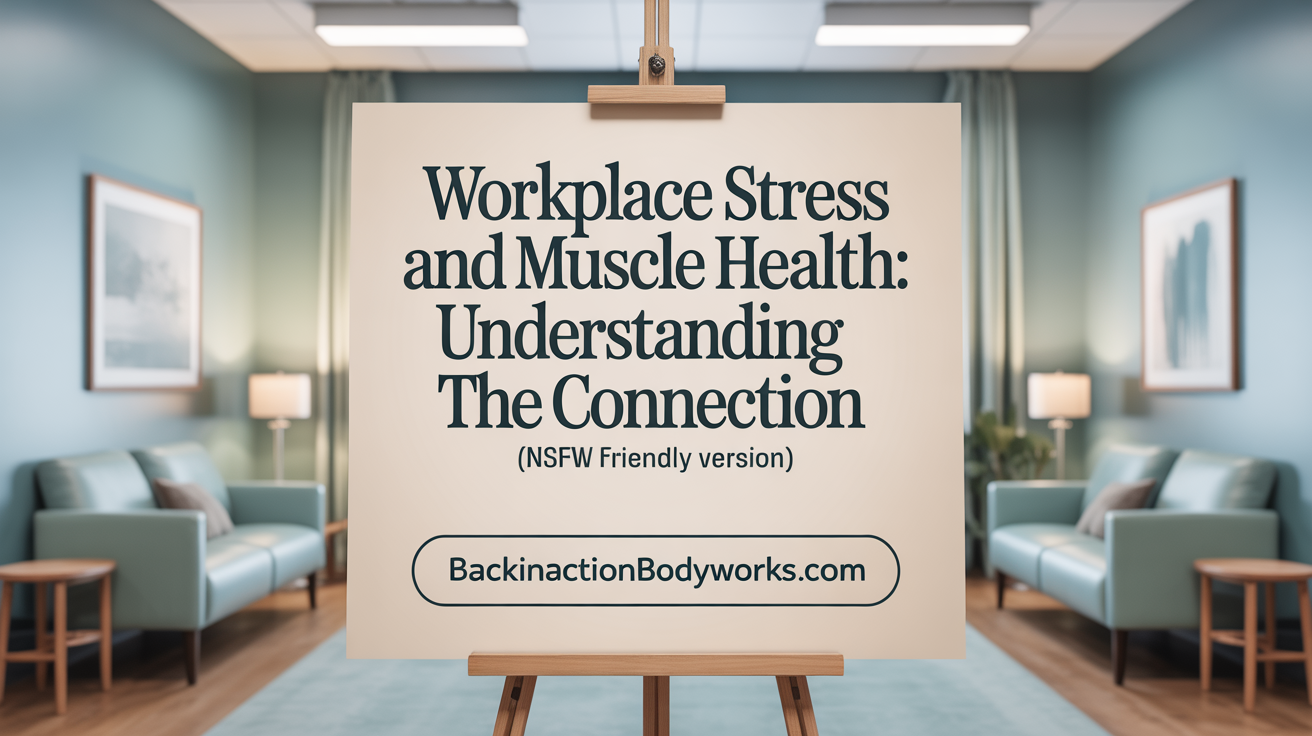
How do occupational and work-related stress factors contribute to musculoskeletal disorders?
Workplace stress significantly influences the development and worsening of musculoskeletal disorders (MSDs). Factors such as high job demands, lack of social support, monotonous tasks, and emotional strain can increase psychological distress among employees.
This heightened stress state leads to increased muscle tension as part of the body's reflex guarding response. When muscles remain tense over time due to chronic stress, it can cause discomfort, stiffness, and pain, especially in areas like the neck, shoulders, back, and upper limbs.
Biochemical responses also play a role. Stress triggers the release of hormones such as cortisol and catecholamines, which can promote inflammation, alter immune functions, and impair tissue healing. These changes may lead to delayed muscle recovery and increased susceptibility to injuries.
Moreover, mental health issues linked with occupational stress—like depression, anxiety, burnout, and PTSD—can influence physical symptoms and health behaviors. For example, stress-related fatigue might reduce physical activity, leading to muscle weakness and imbalance.
In summary, stress-induced physiological changes and psychological factors are interconnected pathways that increase risks for MSDs. Addressing psychosocial factors along with ergonomic risks is crucial for effective prevention and management of work-related musculoskeletal problems.
Why are psychosocial and ergonomic interventions important?
Implementing strategies such as reducing workload, increasing social support at work, and improving ergonomic conditions can mitigate stress levels. Techniques like cognitive-behavioral therapy, stress management programs, and organizational changes can help decrease psychological distress.
In the workplace, fostering a supportive environment, promoting breaks, encouraging physical activity, and providing access to mental health resources are effective measures to prevent MSDs caused by chronic stress. Combining these approaches promotes overall employee wellbeing and reduces the burden of musculoskeletal conditions.
Effective Strategies to Manage Stress-Related Musculoskeletal Issues and Enhance Wellness
What interventions and management strategies are effective for stress-related musculoskeletal issues?
Managing stress-induced musculoskeletal problems requires a holistic approach that targets both the mind and body. Various interventions have proven effective in reducing muscle tension and alleviating pain. Stress reduction techniques like mindfulness meditation, deep breathing exercises, and cognitive-behavioral therapy help calm the nervous system, decrease muscle guarding, and improve overall psychological resilience.
Engaging in regular physical activities such as yoga, tai chi, and aerobic exercises can boost muscle strength, improve flexibility, and diminish stress-related discomfort. These practices not only relax tense muscles but also promote better posture and movement patterns.
Adjustments in ergonomics and posture are vital. Maintaining proper workstation setups, practicing good posture, and avoiding prolonged static positions can prevent musculoskeletal strain. Lifestyle changes, including ensuring adequate sleep, maintaining a balanced diet rich in nutrients supporting bone and muscle health, and managing weight, further contribute to reducing symptoms.
In cases where symptoms persist or are severe, a multidisciplinary treatment plan involving medical professionals, physical therapists, and mental health experts is recommended. This integrated approach aims to address underlying stressors, muscular imbalances, and emotional well-being, promoting optimal recovery and symptom control.
How does the relationship between mental health, stress, and physical wellness influence musculoskeletal health?
Mental health and physical wellness are deeply interconnected, especially concerning musculoskeletal health. Psychological stress, anxiety, and depression often lead to increased muscle tension, inflammation, and altered immune responses, which can cause or worsen pain conditions such as tension headaches, fibromyalgia, and TMJ disorders.
Conversely, engaging in physical activity—like exercise, yoga, or walking—can significantly improve mental health by releasing neurochemicals such as endorphins, reducing stress hormones, and improving sleep quality. These benefits help diminish muscle tension, lower pain sensitivity, and promote a sense of well-being.
Chronic stress also affects bones through hormonal pathways involving cortisol, which can lead to decreased bone density and higher fracture risk. Regular physical activity bolsters musculoskeletal integrity by enhancing bone density, muscle strength, and overall posture.
In essence, addressing mental health through stress management and lifestyle adaptations not only alleviates psychological distress but also fosters healthier musculoskeletal functioning. An integrated focus on both mental and physical health provides the best foundation for preventing and managing musculoskeletal disorders.
Balancing Stress and Musculoskeletal Health for Lifelong Wellbeing
Stress exerts a profound influence on the musculoskeletal system, triggering muscle tension, pain, and inflammation that can disrupt daily life and long-term health. Recognizing symptoms early and understanding the biological and psychosocial factors driving these changes are crucial for effective management. Occupational stress adds complexity by intertwining mental and physical strains that elevate the risk of musculoskeletal disorders. However, adopting comprehensive approaches—combining stress reduction, regular physical activity, ergonomic improvements, and mental health support—can significantly mitigate these adverse effects. Ultimately, fostering awareness and proactive care empowers individuals to protect their musculoskeletal health and achieve a balanced, healthy life.
References
- Stress effects on the body - American Psychological Association
- The Connection Between Stress and Musculoskeletal
- Occupational Stress - Musculoskeletal Disorders and the Workplace
- The Effects of Stress on Muscles and Joints | OrthoUnited
- Study of the Effect of Stress on Skeletal Muscle Function in Geriatrics
- How Stress Affects Your Muscle and Joint Health - Dr. DiPaolo
- How Stress Impacts Musculoskeletal Ailments | Dr. Andrus
Recent articles

Effective Corrective Exercises for Sustainable Pain Management

Taking a Root Cause Approach to Chronic Pain Management

Holistic Pain Management Techniques Without Surgery

How Patient Success Stories Validate Chiropractic Care Benefits

Spinal Decompression: Innovative Treatment for Sciatic Nerve Pain

Spinal Decompression Therapy: A Non-Invasive Approach to Sciatica Relief

Exploring Holistic Approaches Beyond Surgery for Pain Relief

Practical Lifestyle Advice to Support a Healthy Spine Every Day

Corrective Exercise Routines Designed for Long-Term Pain Prevention

Real Patient Stories: Overcoming Chronic Pain with Chiropractic Care

Lifestyle Changes That Promote a Healthy Spine and Prevent Injury

How Addressing the Root Cause of Pain Leads to Lasting Relief

Non-Surgical Holistic Therapies to Manage Chronic Pain Effectively

Nutritional Counseling's Impact on Physical Health and Healing

Benefits of Regular Chiropractic Care for a Stronger Back

Your First Chiropractic Visit: What to Expect and How to Prepare

Patient Experiences: How Chiropractic Care Transformed Their Lives

Exploring Holistic, Non-Surgical Options for Pain Management

Combining Physiotherapy with Chiropractic Treatments for Enhanced Recovery

Holistic Treatments That Offer Alternatives to Surgery for Pain Relief

Corrective Exercise Strategies for Long-Term Spine Health

How Physiotherapy Complements Chiropractic Adjustments for Better Outcomes

First-Time Chiropractic Visitors: What You Should Know

Understanding the Importance of Treating Pain at Its Source

Adopting Lifestyle Changes to Support Your Spine's Wellness

Utilizing Physiotherapy to Enhance Chiropractic Treatment Outcomes

The Key Advantages of Chiropractic Care for Back Pain Sufferers

Why Focusing on Root Causes Improves Pain Treatment Success

Corrective Exercises That Promote Lasting Pain Relief and Mobility

Sciatica Relief Through Targeted Spinal Decompression Techniques

Preparing for Your First Chiropractic Appointment with Confidence

Healthy Lifestyle Habits for Maintaining Spinal Alignment

Success Stories Highlighting Chiropractic's Role in Pain Recovery

Top Benefits of Chiropractic Care for Chronic Back Pain

Nutrition Tips to Boost Your Overall Wellness and Recovery

How Chiropractic Care Alleviates Back Pain Naturally

How Nutritional Counseling Supports Overall Wellness and Spine Health

Step-by-Step Guide to Your First Visit with a Chiropractor

Using Nutrition to Support Chiropractic and Overall Wellness

Integrating Physiotherapy in Your Chiropractic Healing Journey

How Physiotherapy Complements Chiropractic Adjustments for Faster Healing

Lifestyle Tips for Maintaining a Healthy Spine and Preventing Back Pain

Heartwarming Patient Testimonials Highlighting Chiropractic Success

How Proper Nutrition Supports Chiropractic and Physiotherapy Treatments

Combining Physiotherapy and Chiropractic Treatments for Optimal Recovery

Why Chiropractic Treatments Are Effective for Managing Back Pain

Choosing a Chiropractor: Tips for Finding a Trusted Provider

Integrating Physiotherapy and Chiropractic: Benefits and What to Expect

How Tailored Corrective Exercises Can Aid in Pain Management

Chiropractic Care: A Proven Solution for Alleviating Back Pain

What to Expect at Your First Chiropractic Visit: A Comprehensive Guide

The Importance of Root Cause Analysis in Effective Pain Management

The Role of Corrective Exercises in Sustaining Pain-Free Living

Combining Chiropractic and Physiotherapy for Comprehensive Pain Relief

How Addressing Underlying Causes Improves Pain Treatment Effectiveness

Maintaining Spinal Health Through Lifestyle Changes and Preventive Care

Understanding the Benefits of Chiropractic Adjustments for Back Pain Sufferers

Spinal Decompression Therapy: A New Hope for Sciatica Relief

Lifestyle Recommendations to Support a Healthy Spine and Reduce Pain

Choosing the Right Chiropractor: Key Factors to Consider Before Your First Appointment

Non-Invasive Treatment Alternatives: A Holistic Approach to Pain Relief

Corrective Exercises to Support Long-Term Relief from Chronic Pain

Exploring Non-Surgical Approaches to Spine Health and Wellness

Tips for Daily Habits That Keep Your Spine Strong

Success Stories: How Chiropractic Treatments Changed Lives

Why Focusing on the Root Cause of Pain Leads to Better Outcomes

Nutritional Counseling and Its Impact on Overall Wellness and Recovery

Patient Testimonials That Showcase the Power of Chiropractic Care

Preparing for Your First Chiropractic Appointment: What You Need to Know

Holistic Treatment Options: Beyond Surgery for Pain Relief

Holistic Pain Relief Methods That Avoid Surgery

Nutritional Strategies for Supporting Spine Health and Recovery

First Chiropractic Visit: What Happens and How to Prepare

Chiropractic Patient Success Stories: Inspiring Journeys to Wellness
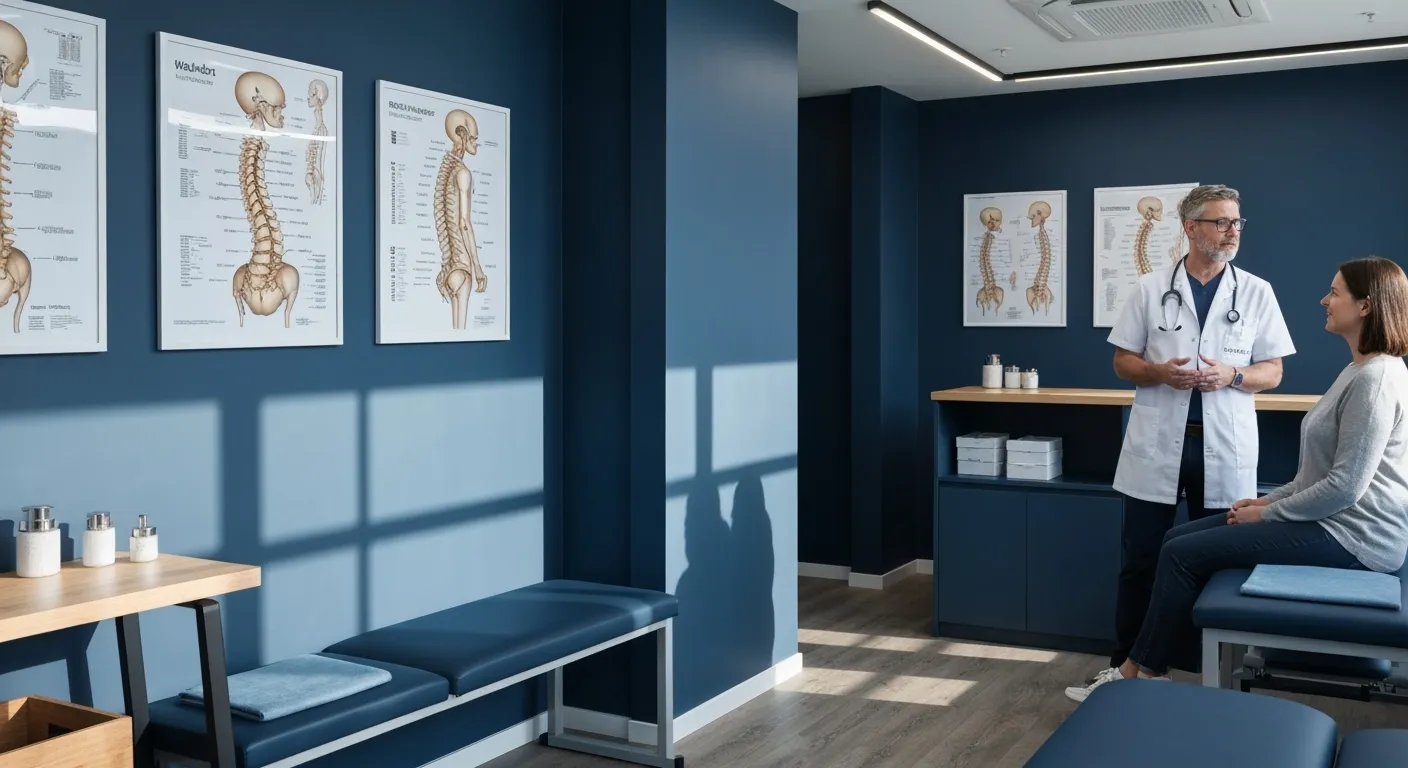
Effectiveness of Spinal Decompression Therapy in Managing Sciatic Nerve Pain

Addressing Pain at Its Source: Why Treating the Root Cause Matters

Corrective Exercise Programs Designed for Long-Term Pain Prevention

Healthy Lifestyle Advice for Maintaining Spinal Alignment
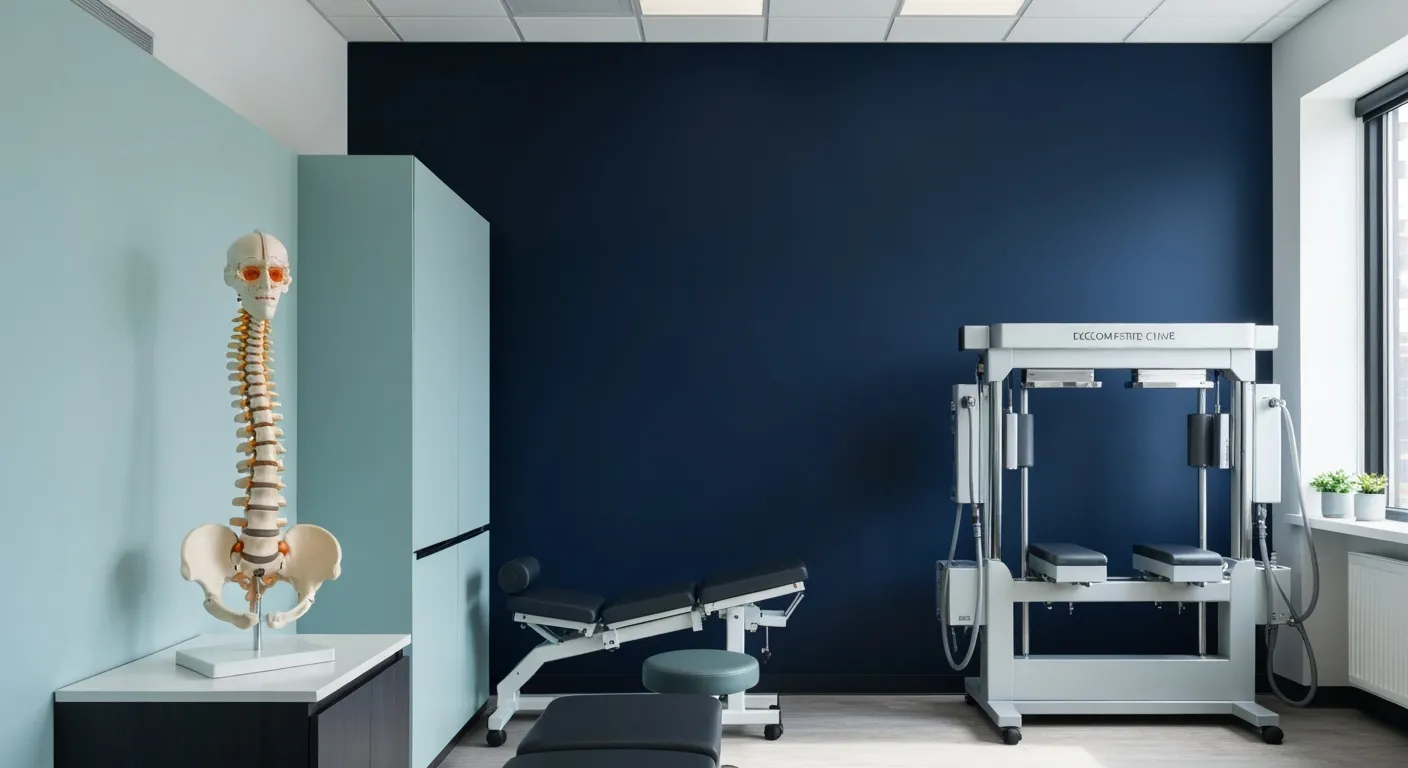
Understanding Spinal Decompression as a Treatment for Sciatica Pain
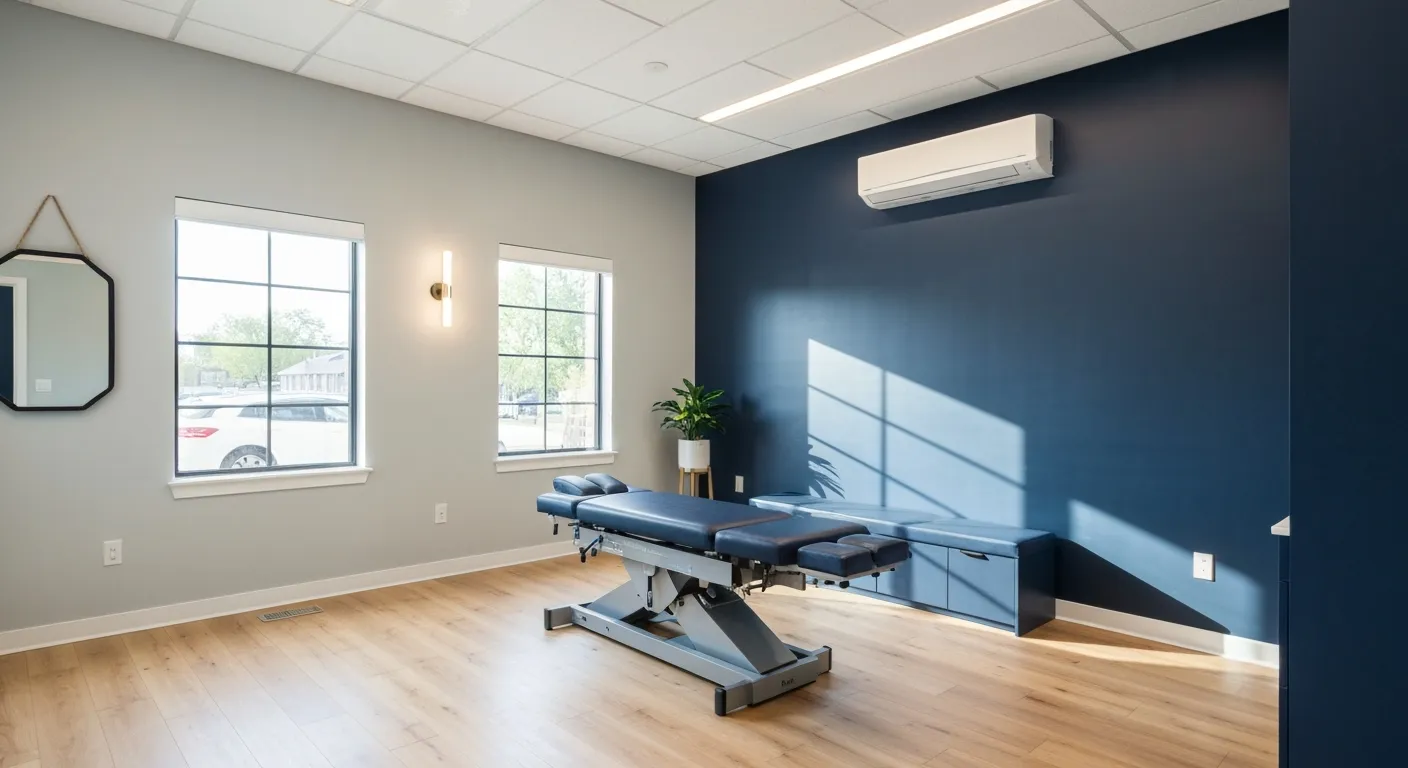
Benefits of Chiropractic Care Specifically for Back Pain Relief

Understanding Gait Analysis in Physiotherapy
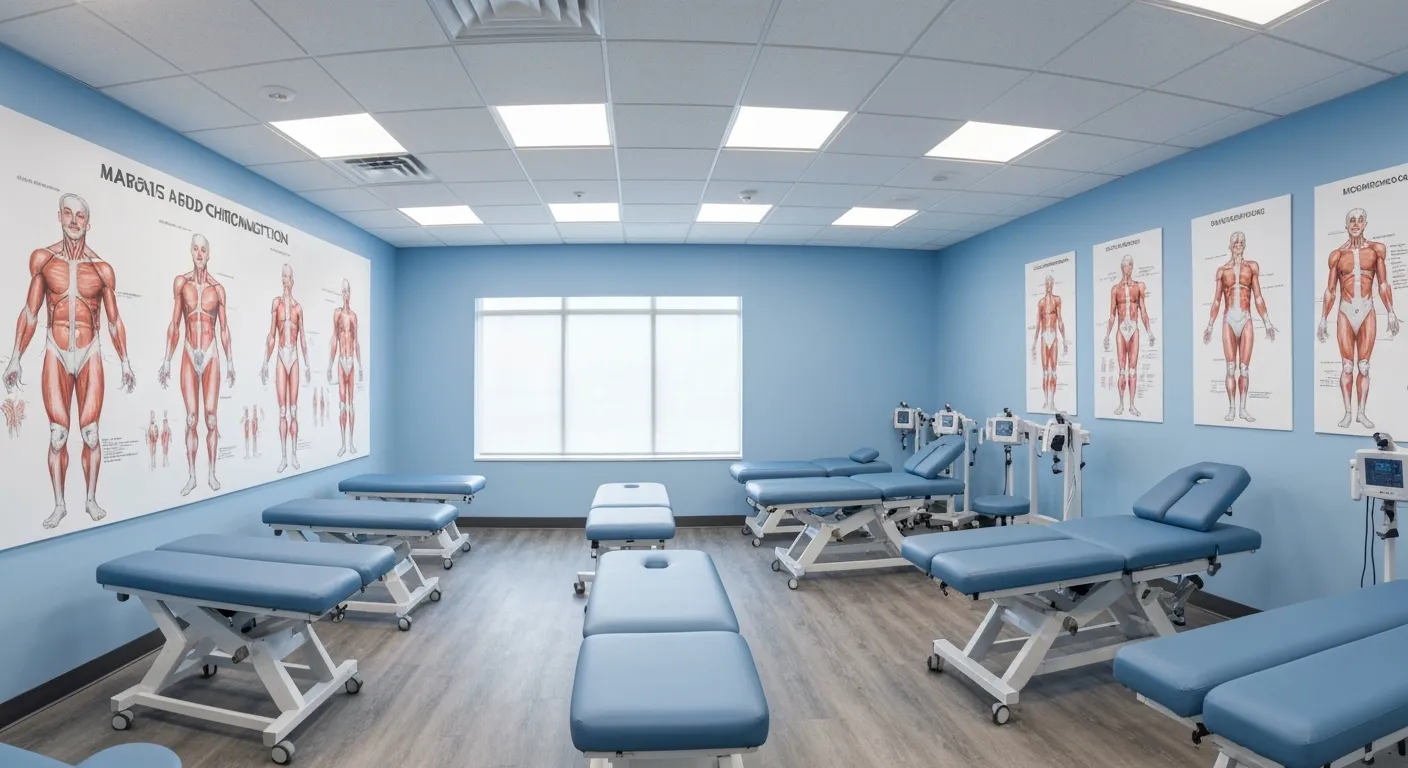
The Difference Between Muscle Soreness and Dysfunction

Workplace Stress Statistics: How Muscle Tension Impacts Productivity

How Physiotherapy Improves Mobility for Seniors

How to Communicate Pain Levels to Your Therapist Effectively
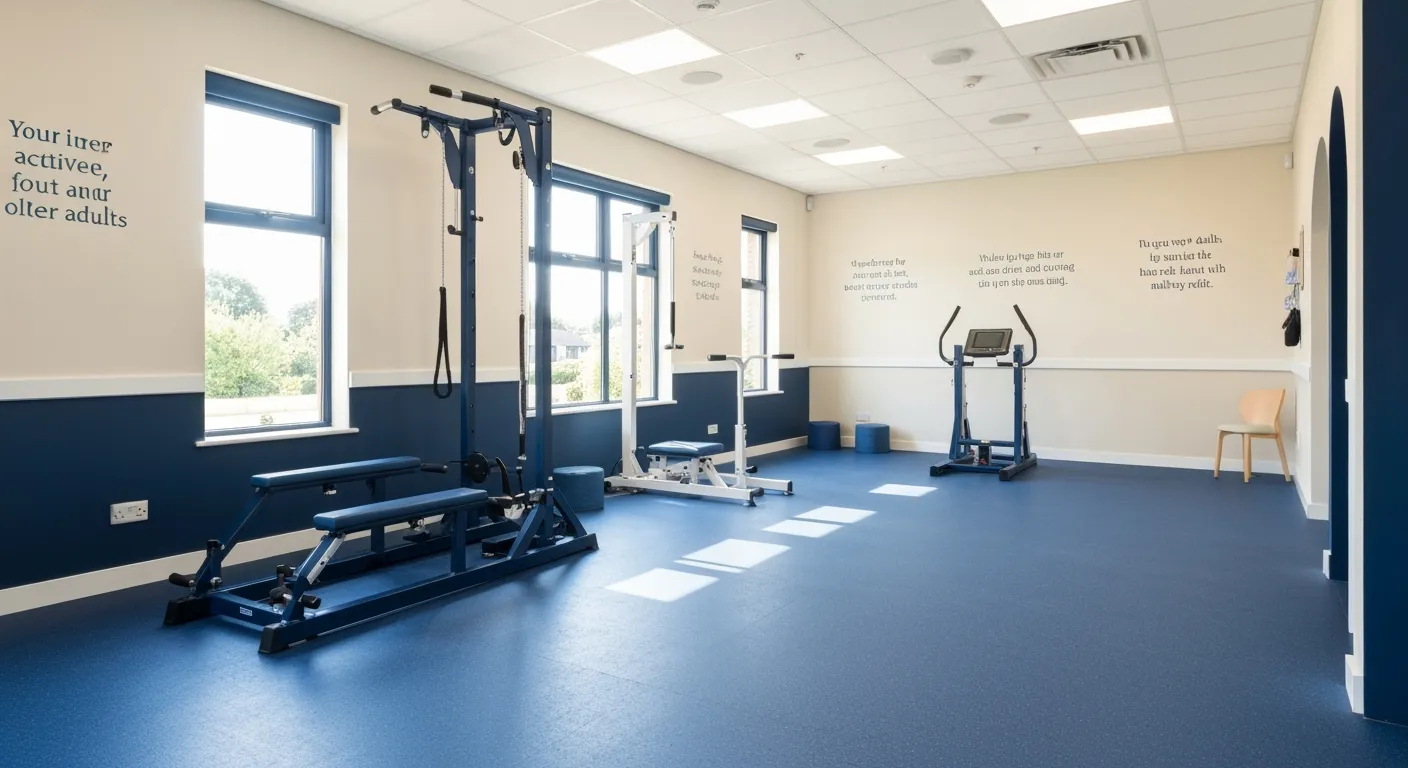
Physiotherapy Interventions for Balance and Fall Prevention

How Physiotherapy Helps Post-Surgical Recovery

Lifestyle Advice Everyone with Back Pain Should Follow

Chiropractic Industry Statistics: Growth, Demand, and Future Trends

Myofascial Release: What It Is and Why It Matters

Chiropractic Care vs. Traditional Medicine: Cost and Effectiveness Statistics

Ergonomic Workspace Tips to Support Spinal Health

Why Proper Breathing Matters During a Massage Session
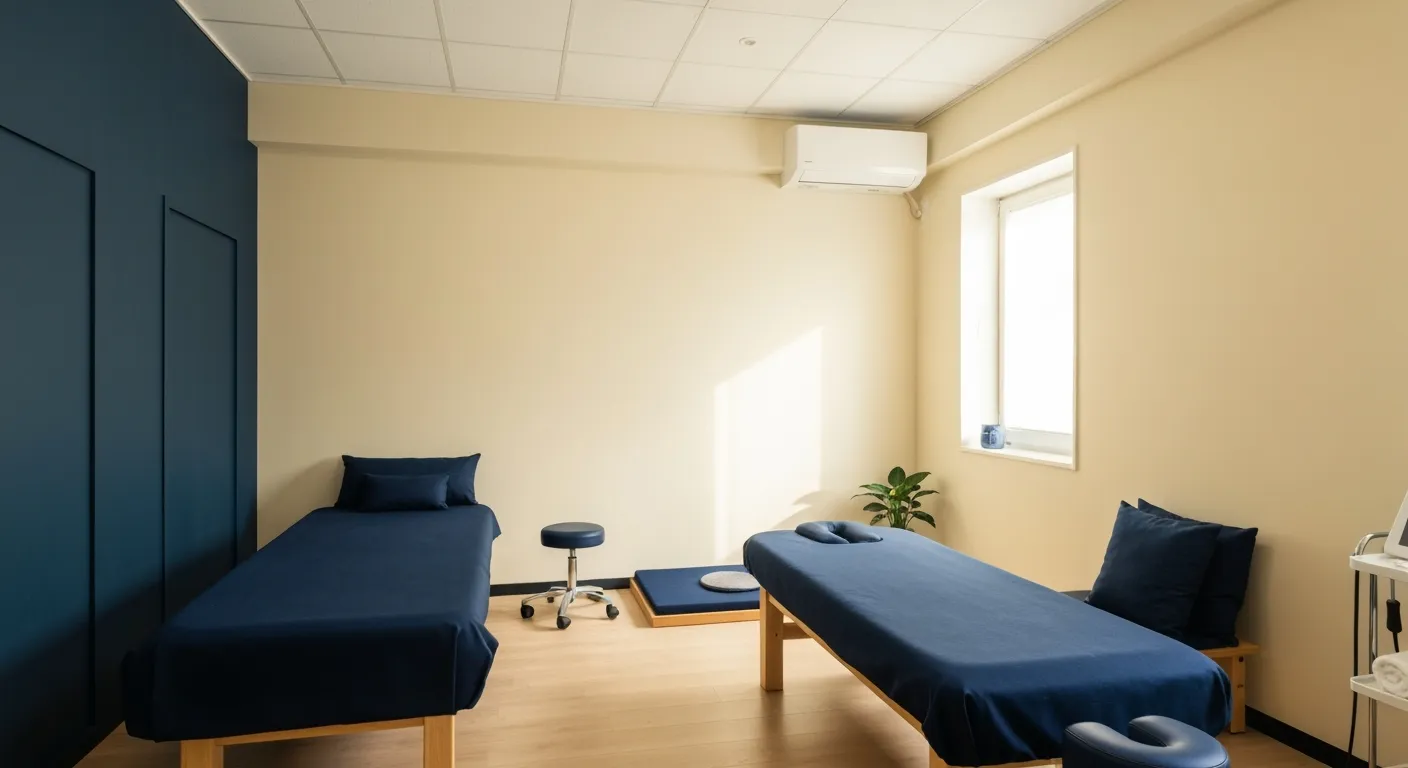
Client Retention Trends in the Therapeutic Bodywork Industry

Why Physiotherapy Is Key in Preventing Re-Injury

How Massage Therapy Supports Natural Pain Relief
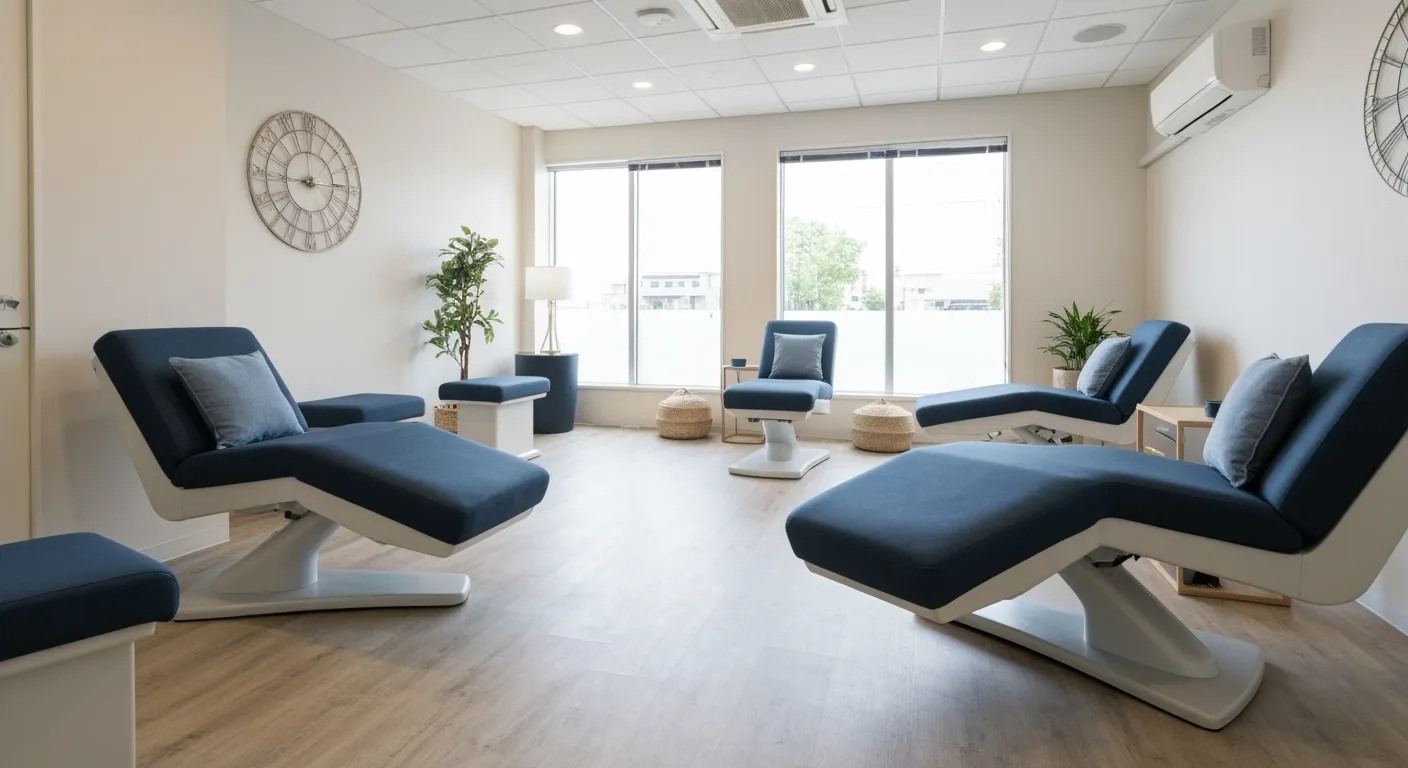
Healthcare Cost Reduction Through Preventive Bodywork Use
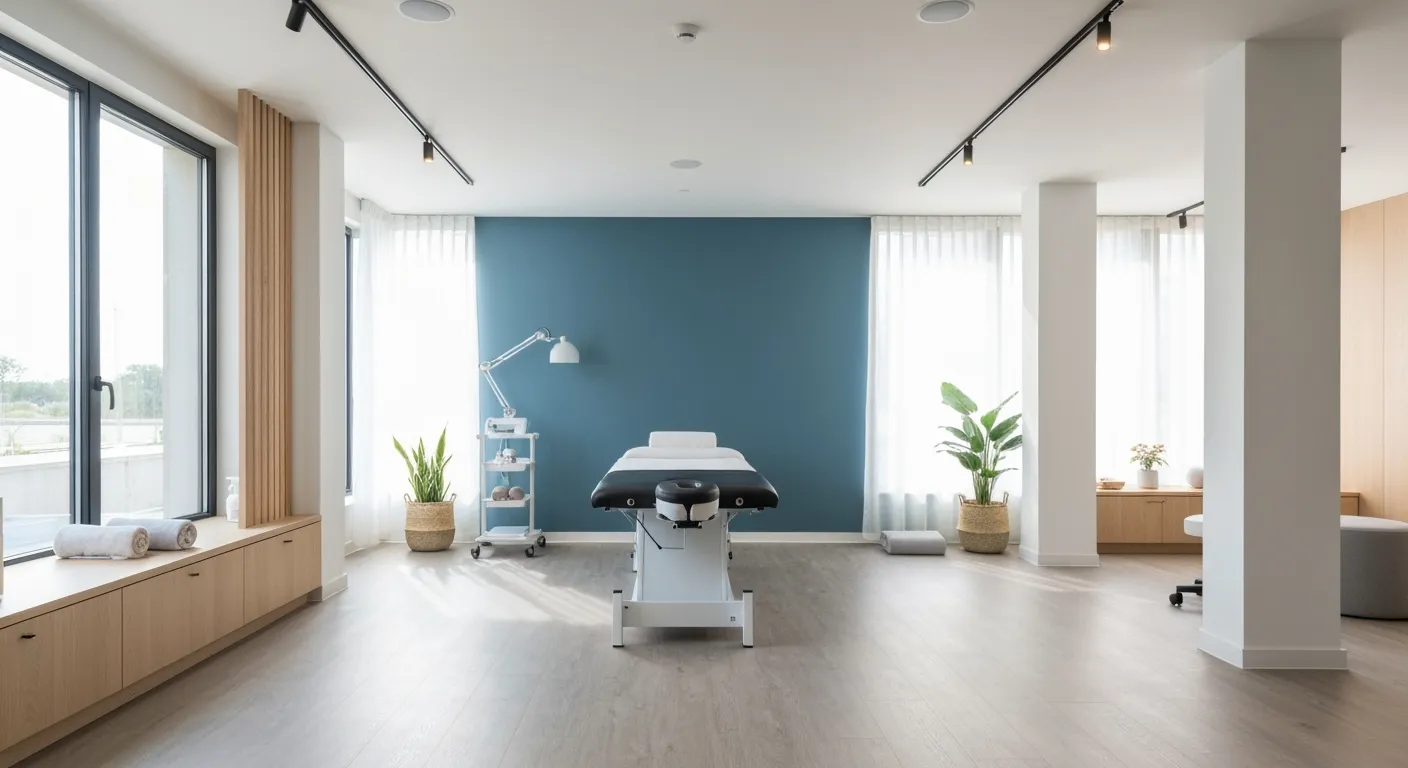
Athlete Massage Statistics: Pre-Event vs. Post-Event Outcomes

Massage for Migraine and Headache Relief

